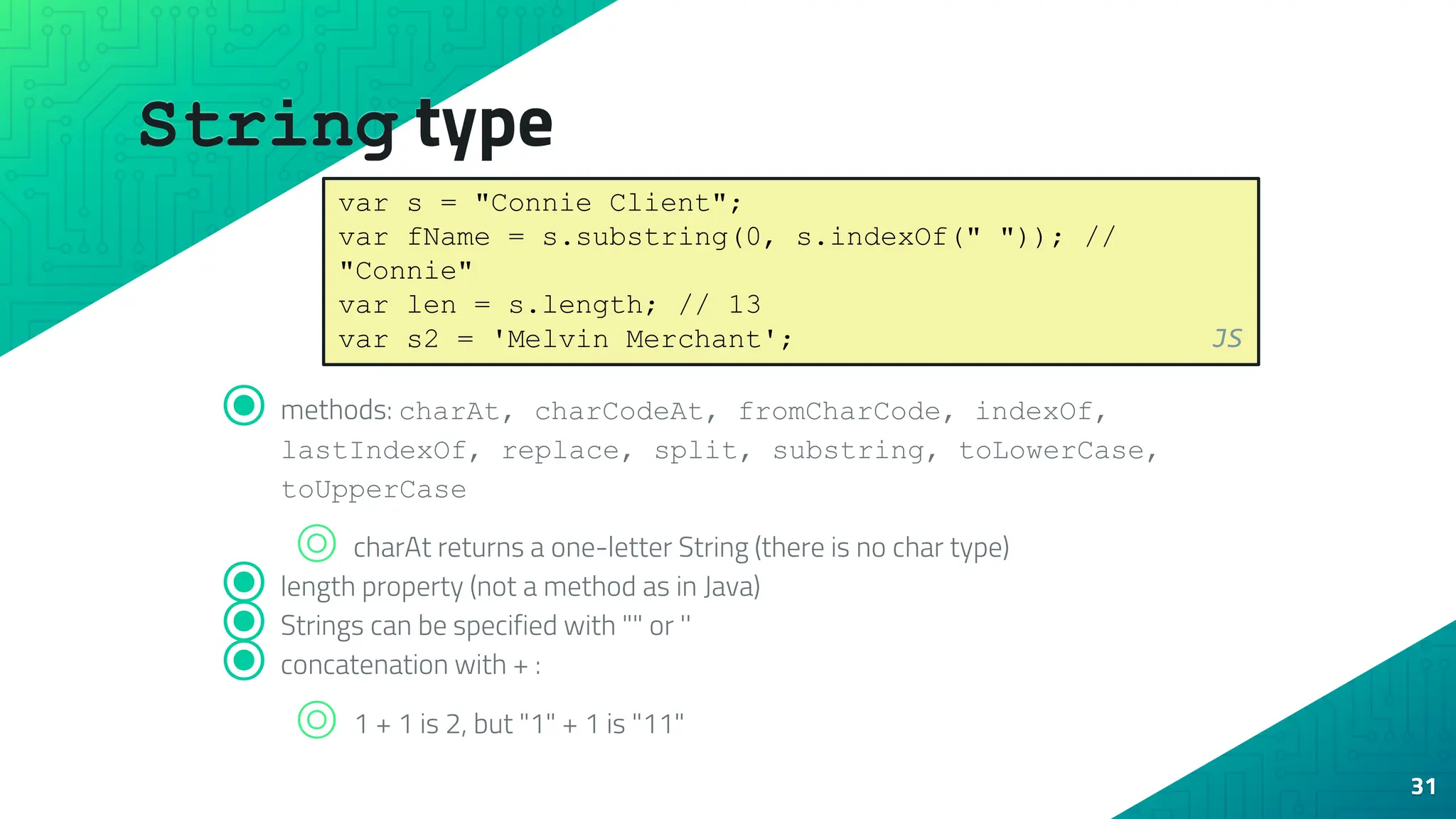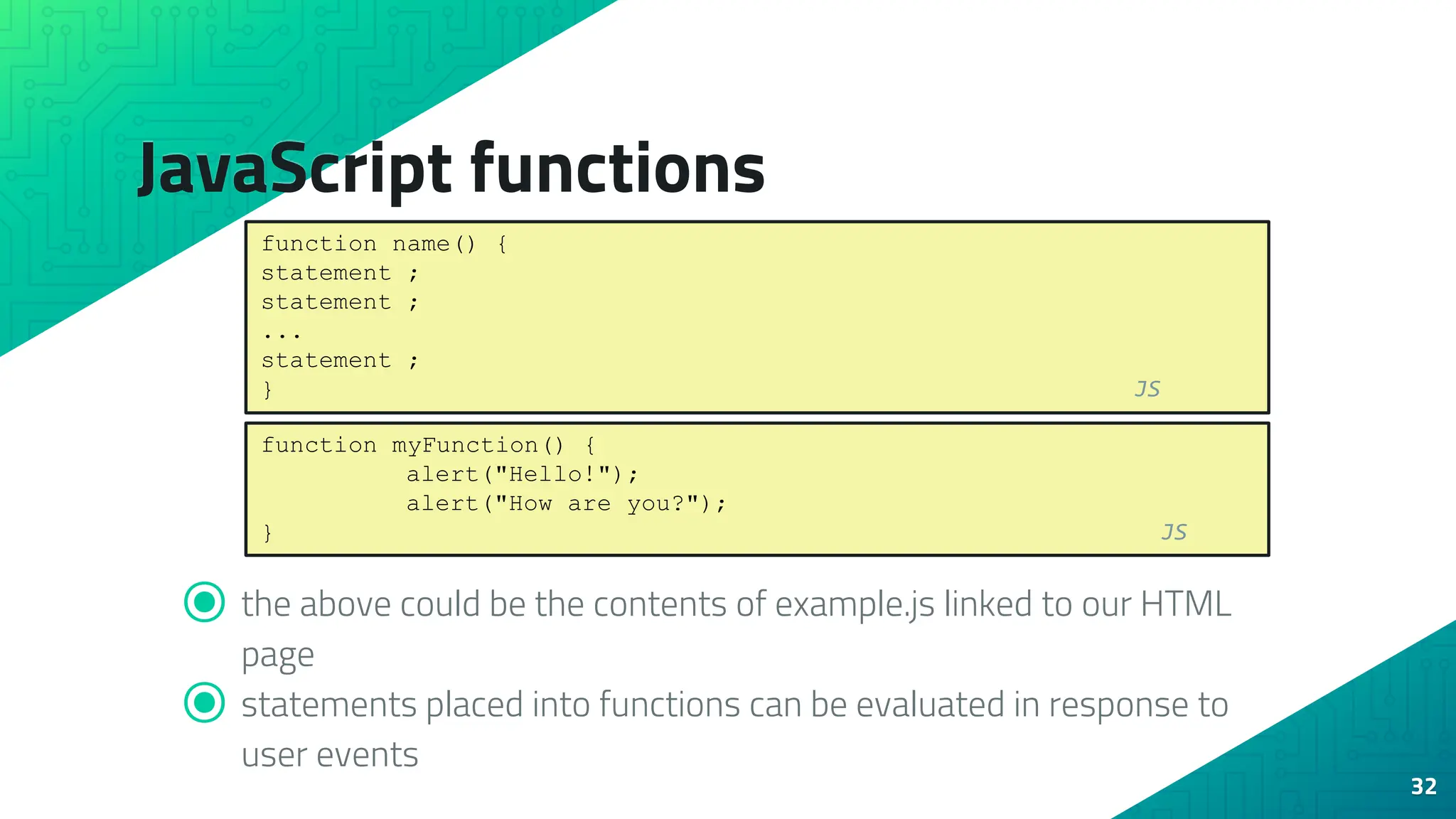This document provides an introduction to JavaScript, including: - Why use client-side scripting with JavaScript in addition to server-side PHP. JavaScript allows for faster user interfaces, more efficient page updates, and event-driven interactions. - What JavaScript is - a lightweight scripting language used to make web pages interactive by inserting dynamic text, reacting to events, and performing calculations in the browser. - Key differences between JavaScript and other languages like Java and PHP in terms of being interpreted vs compiled, syntax, and where code runs. - How JavaScript uses event-driven programming in response to user actions rather than starting with a main method. - The Document Object Model (DOM) which allows JavaScript to access

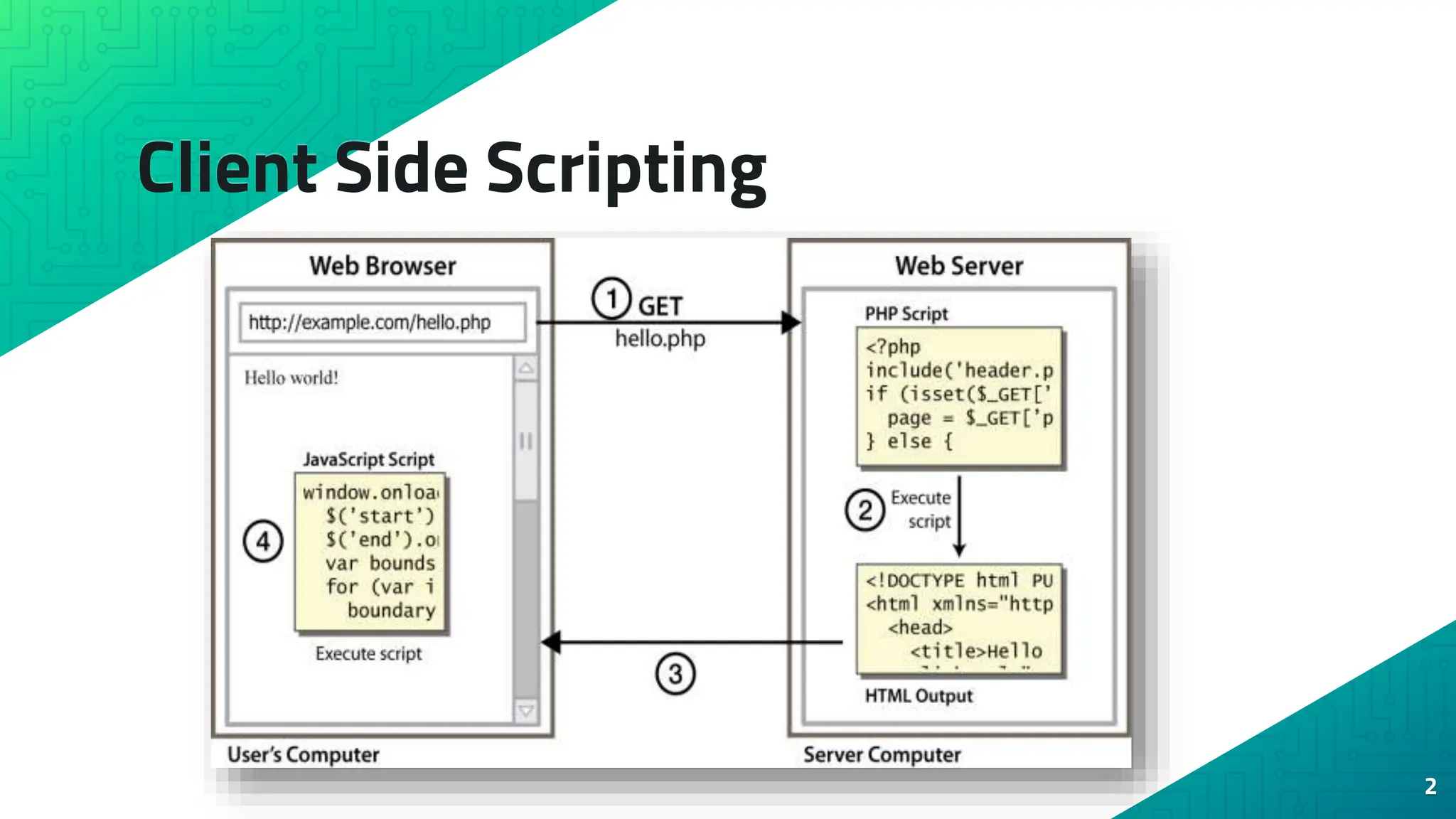
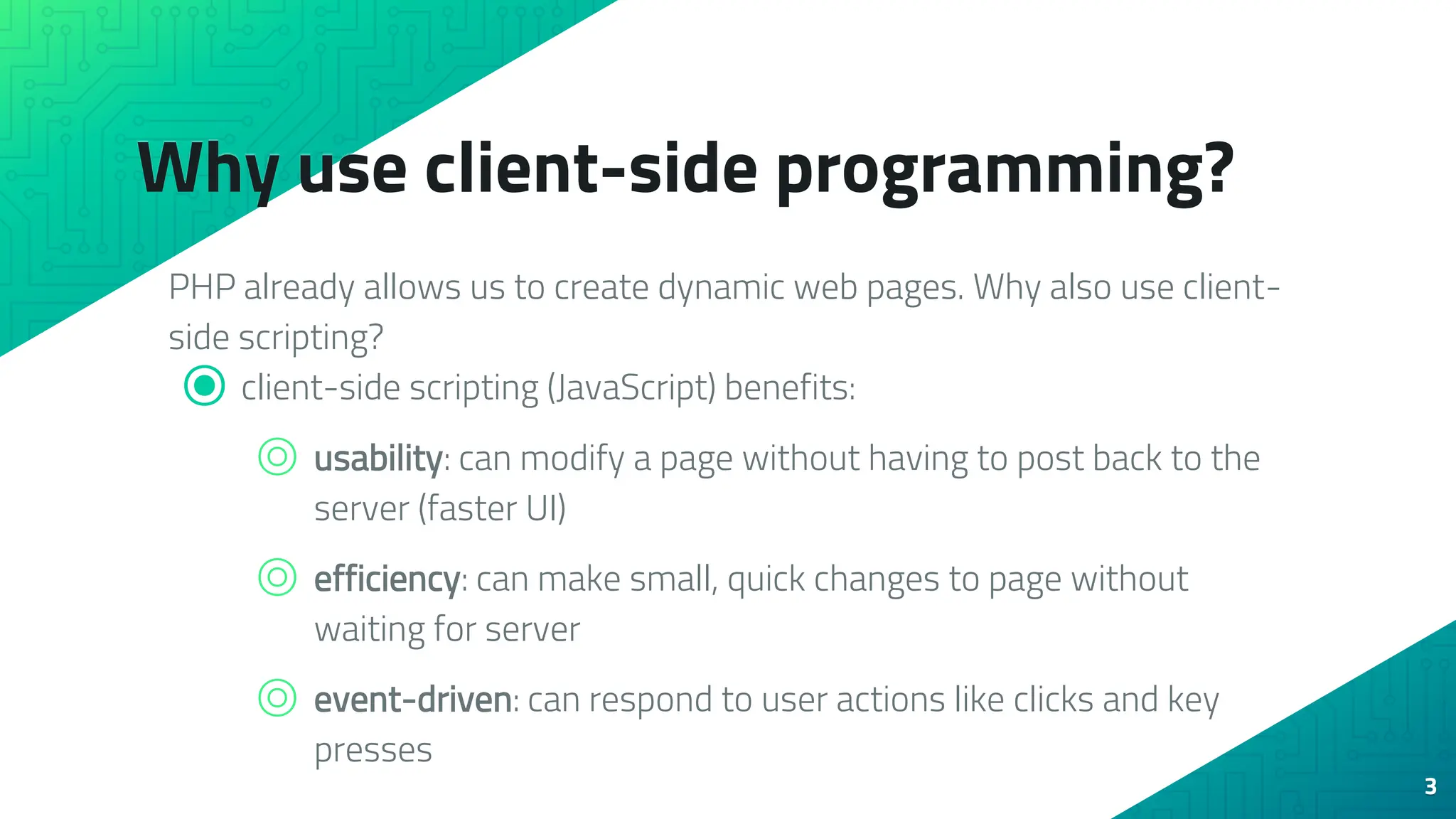
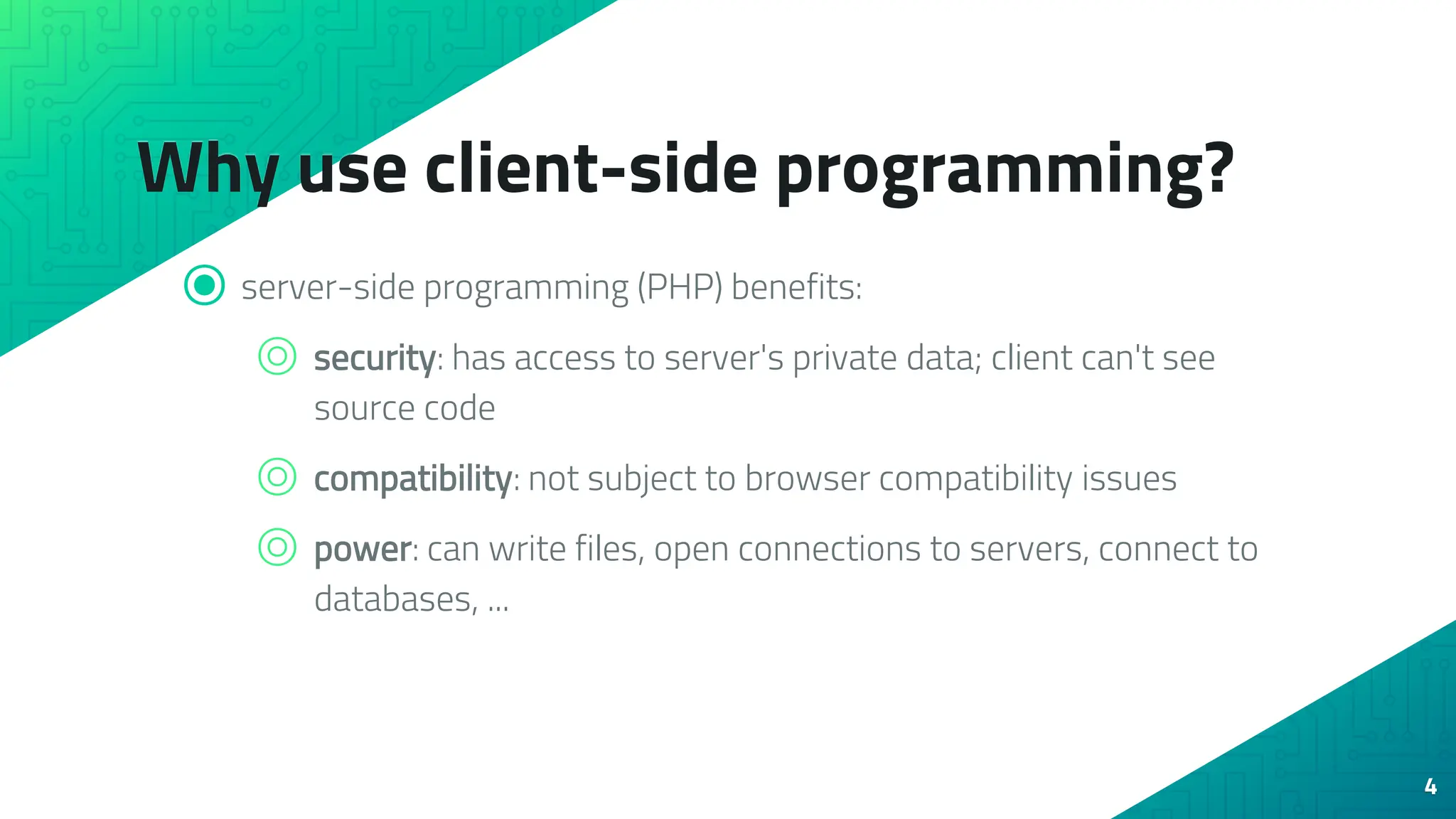
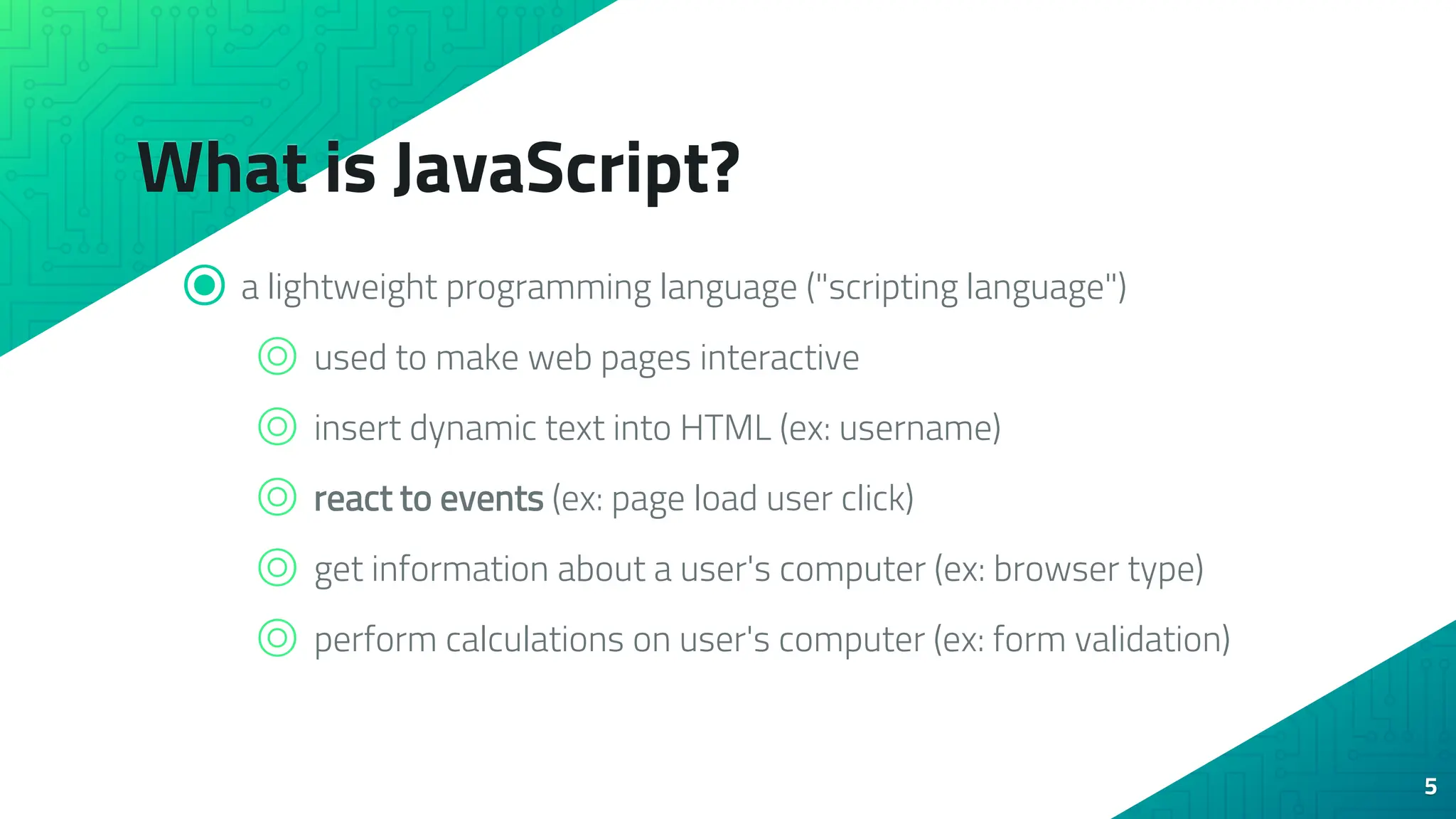
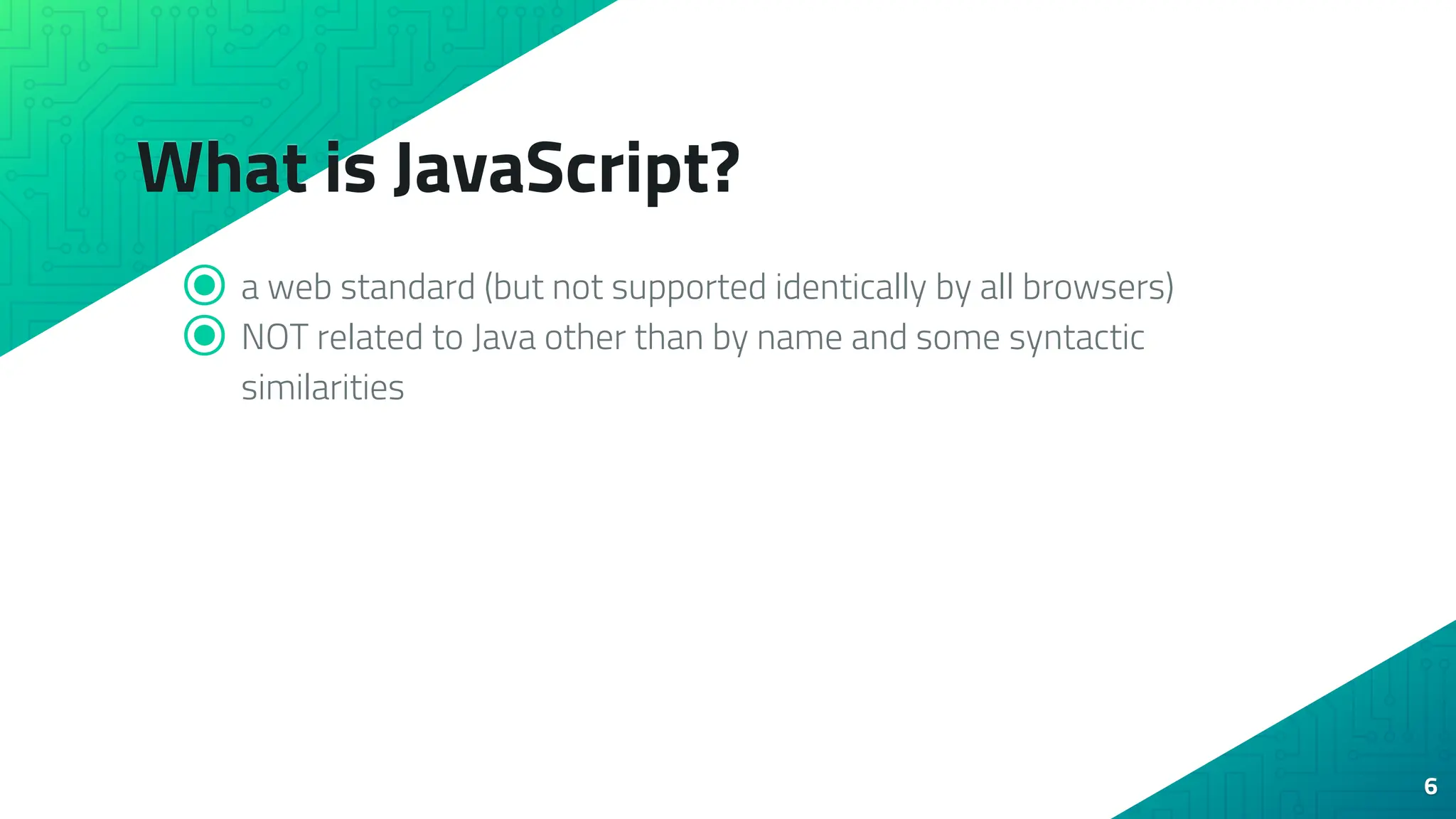
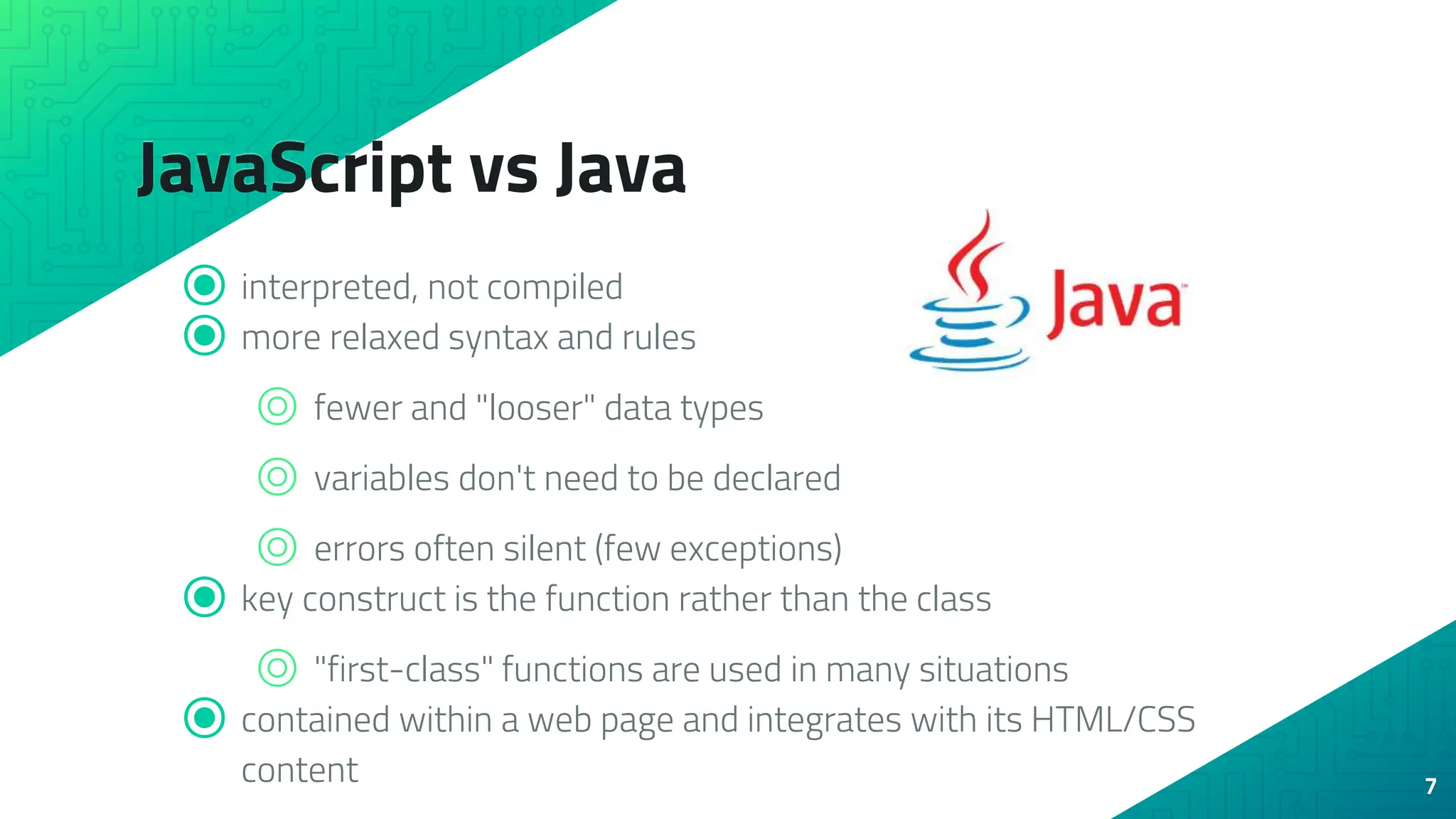

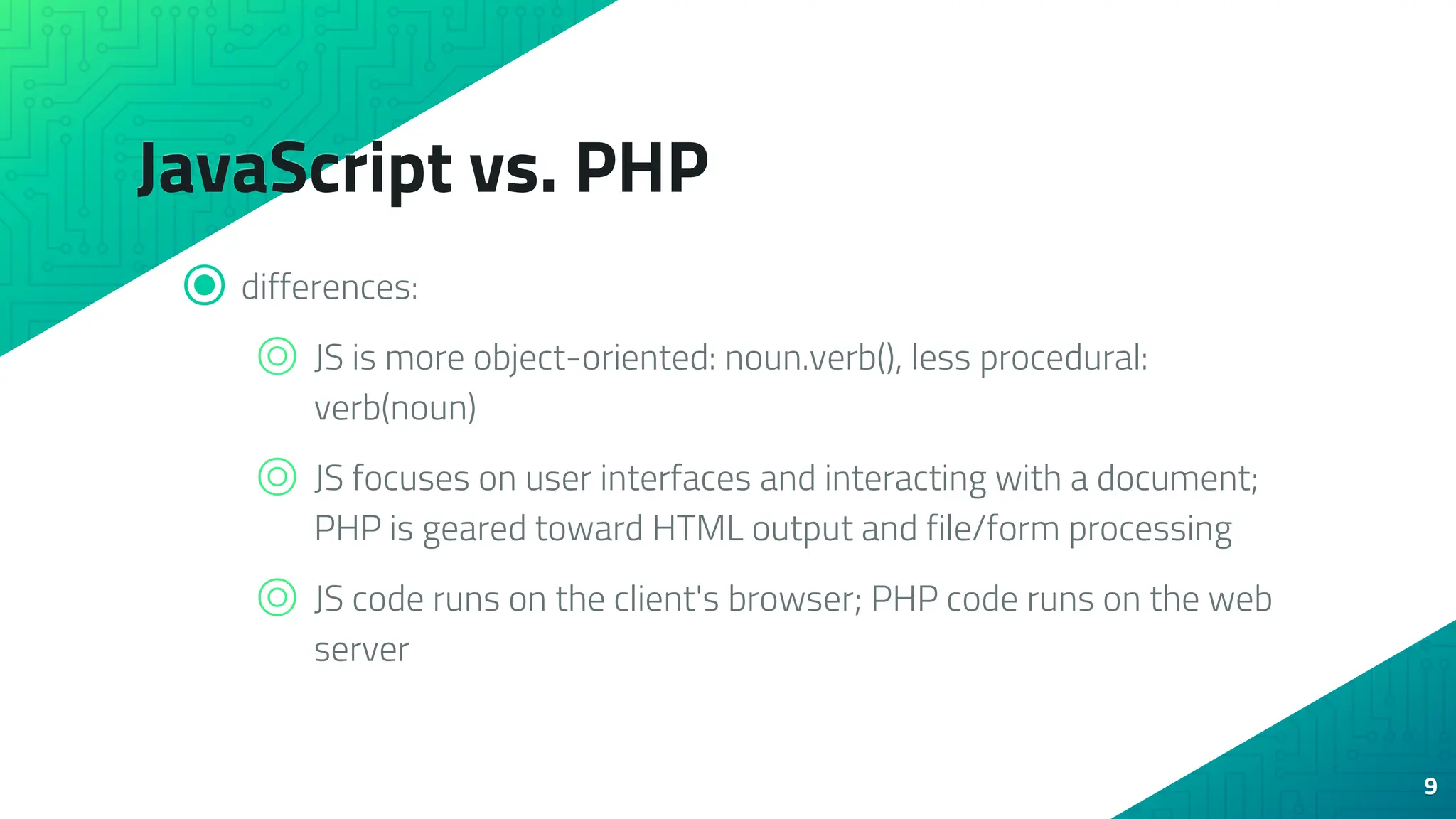
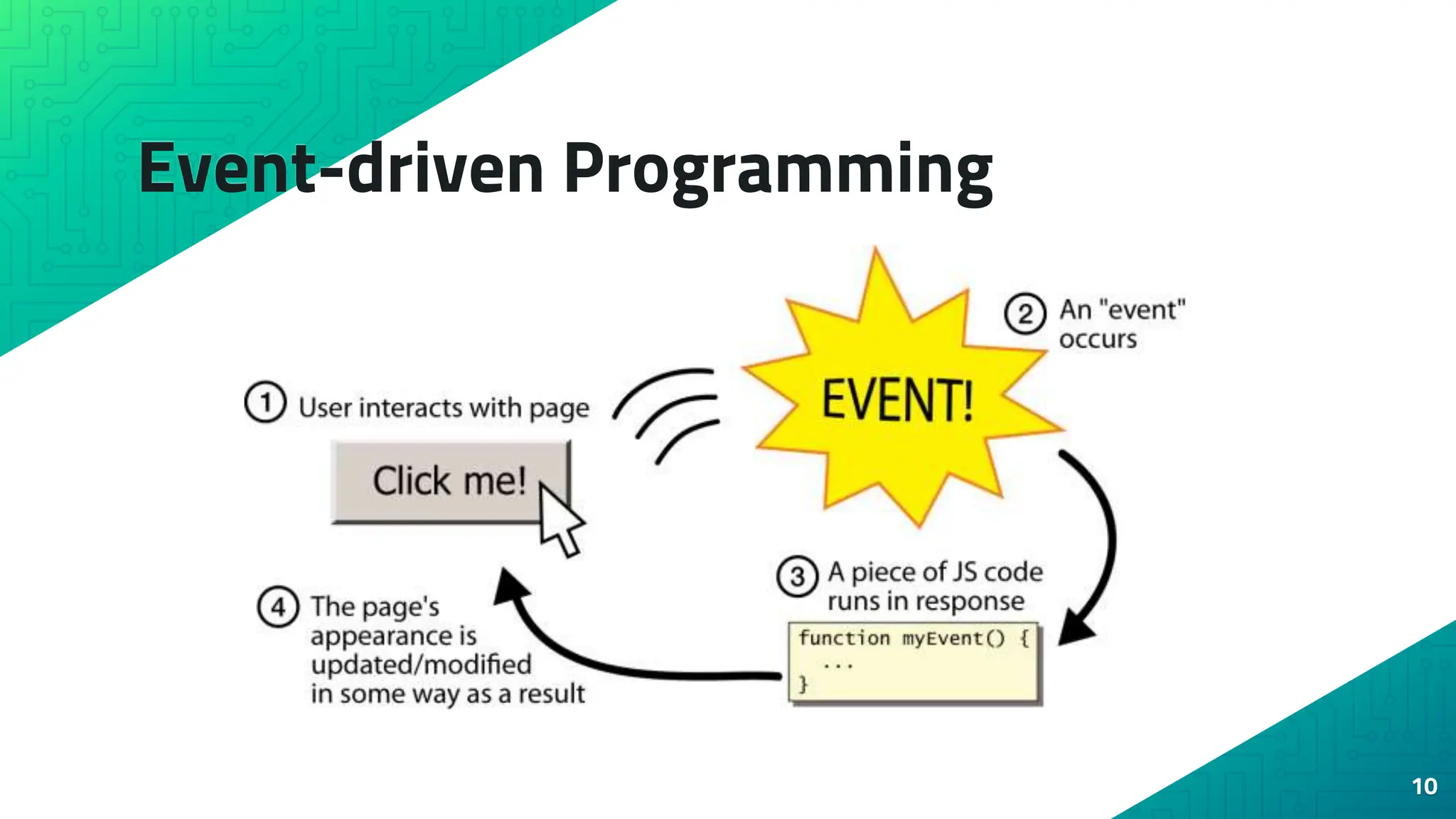
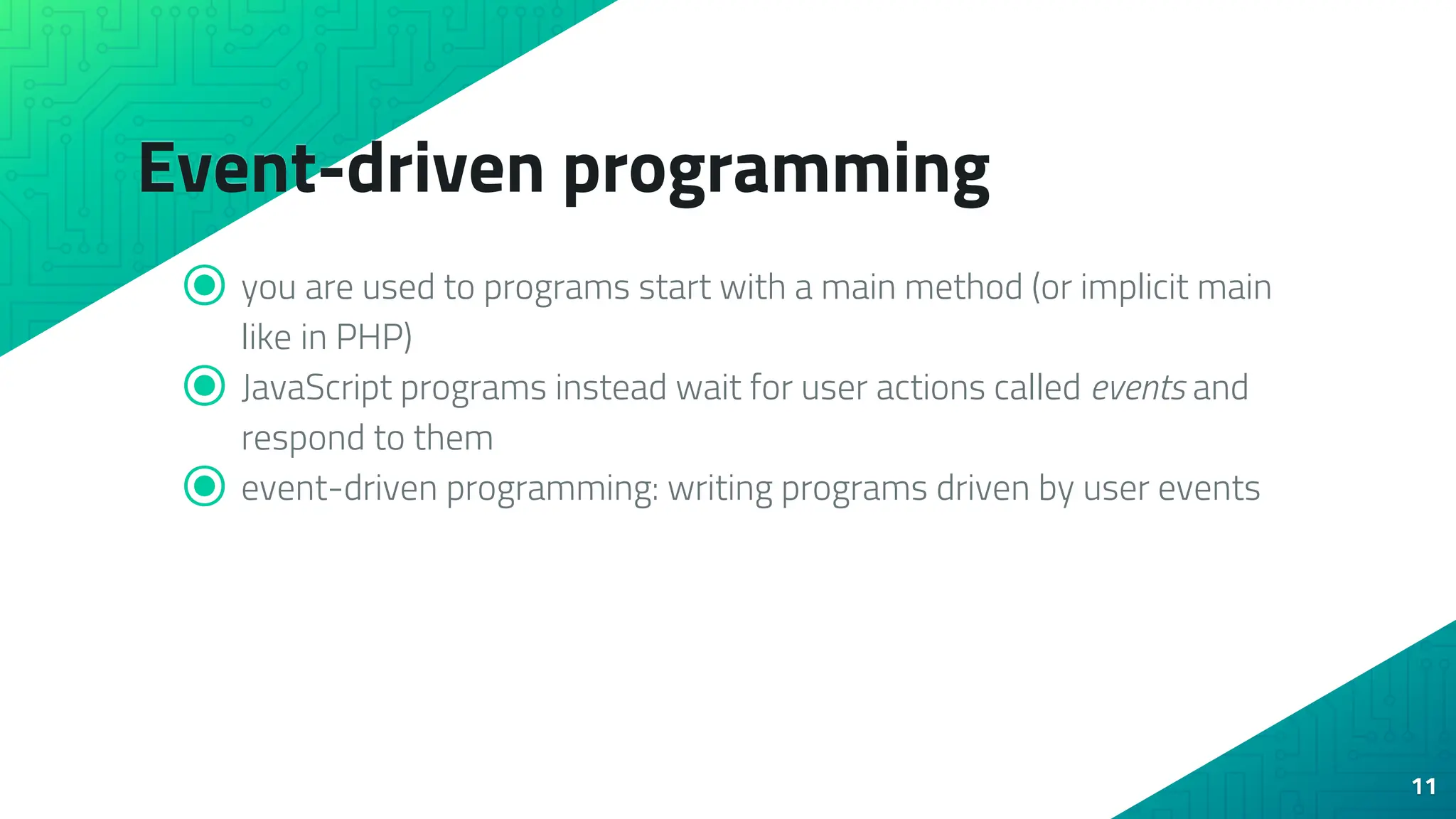
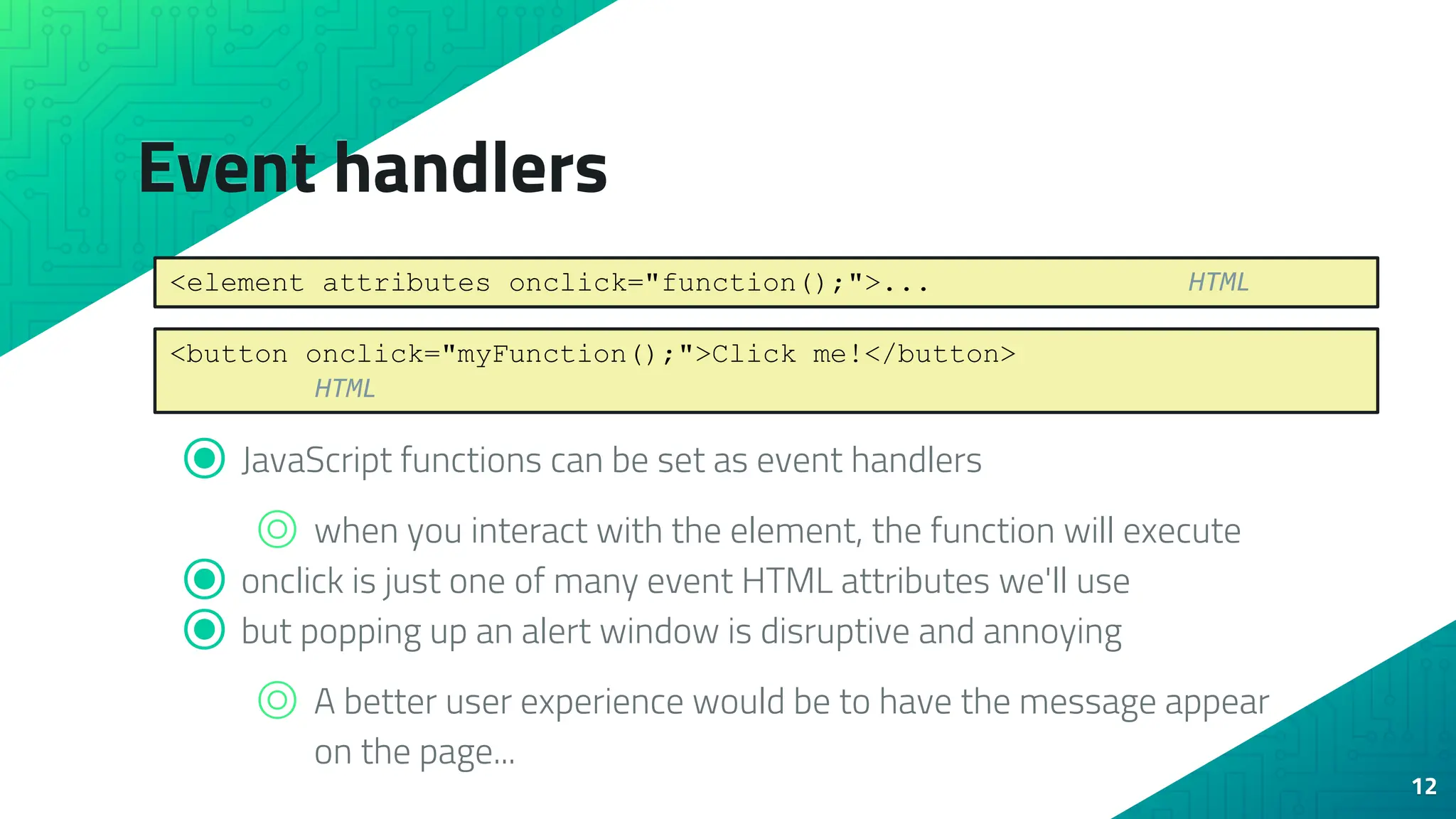
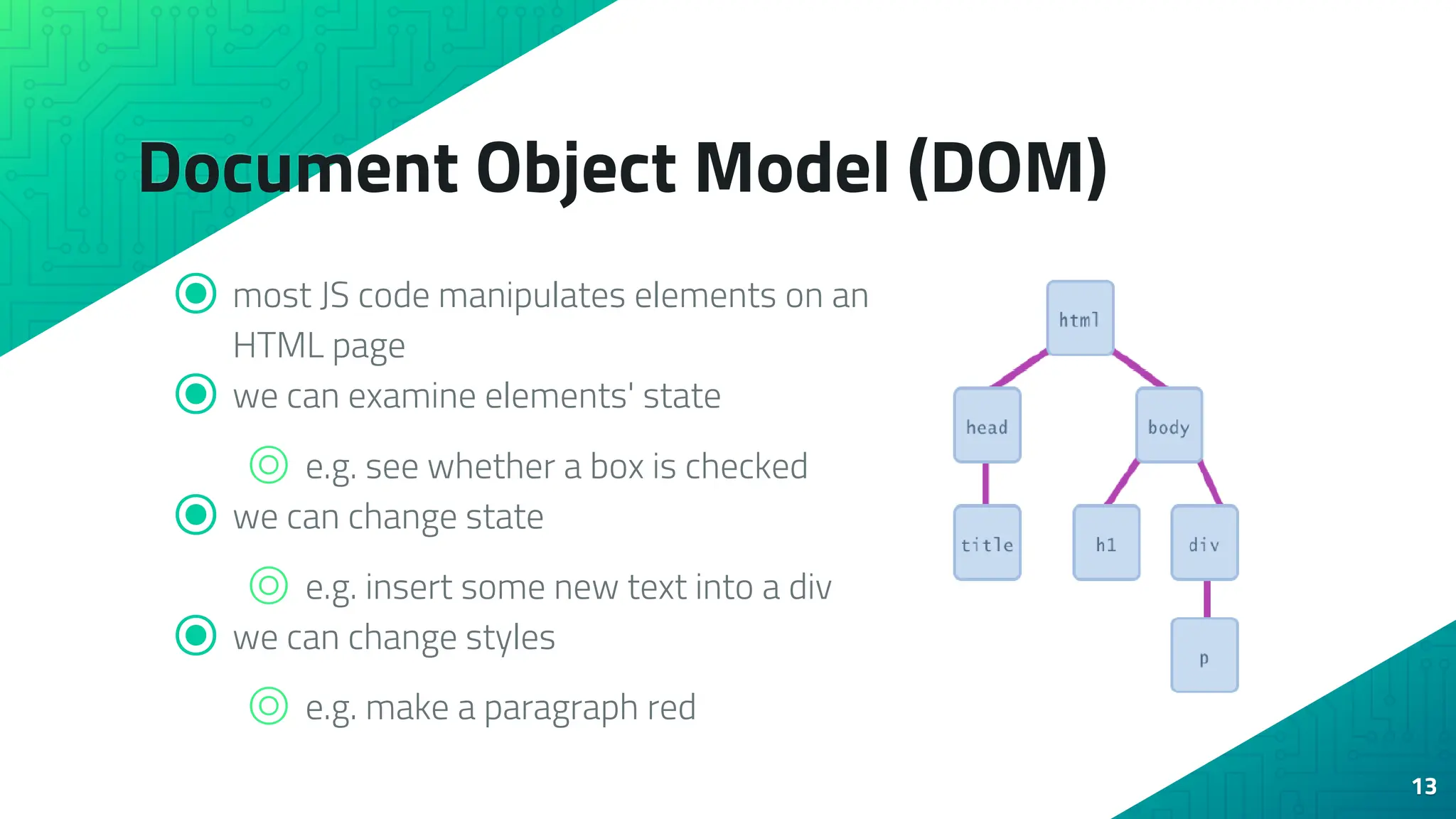
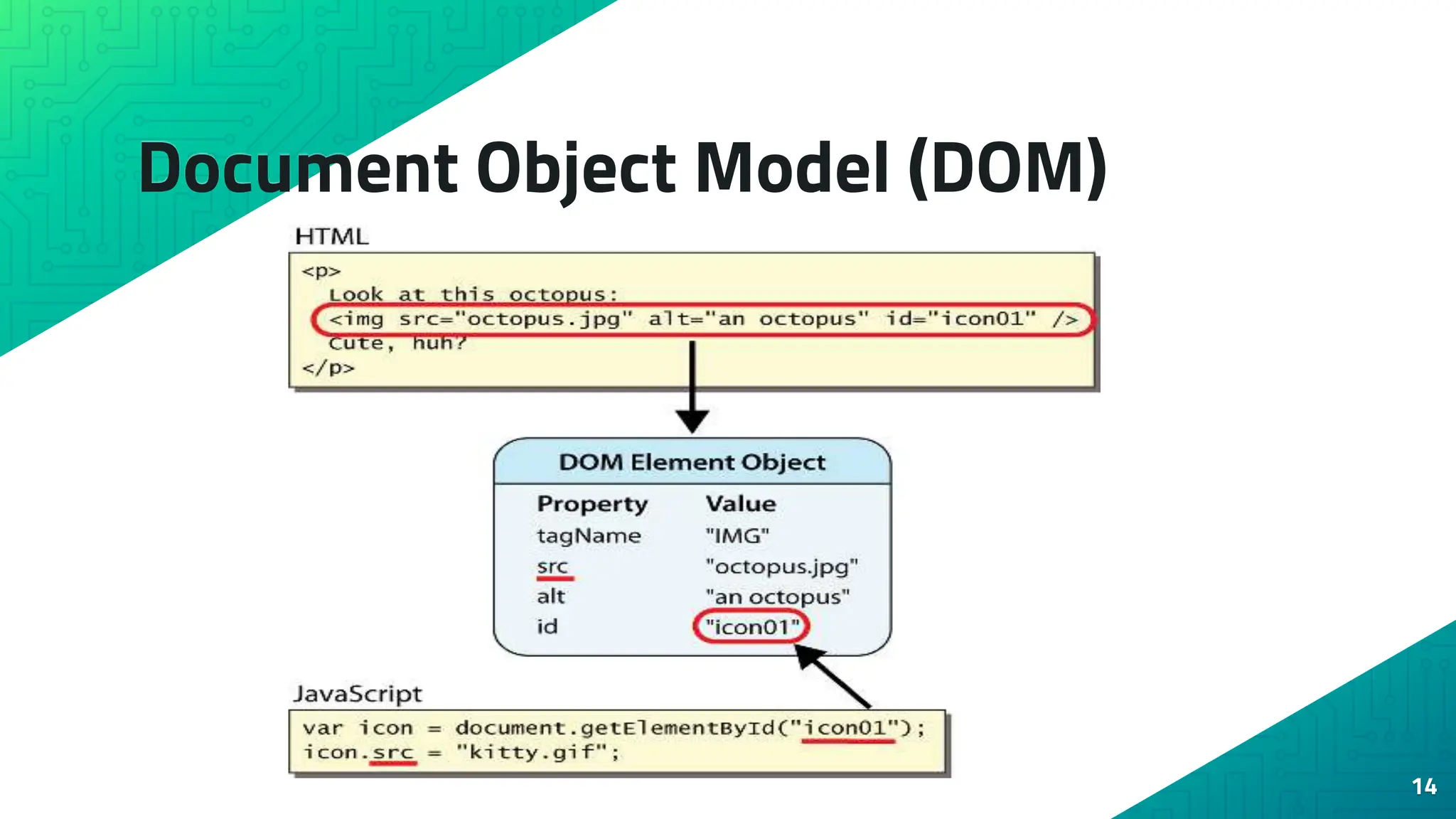
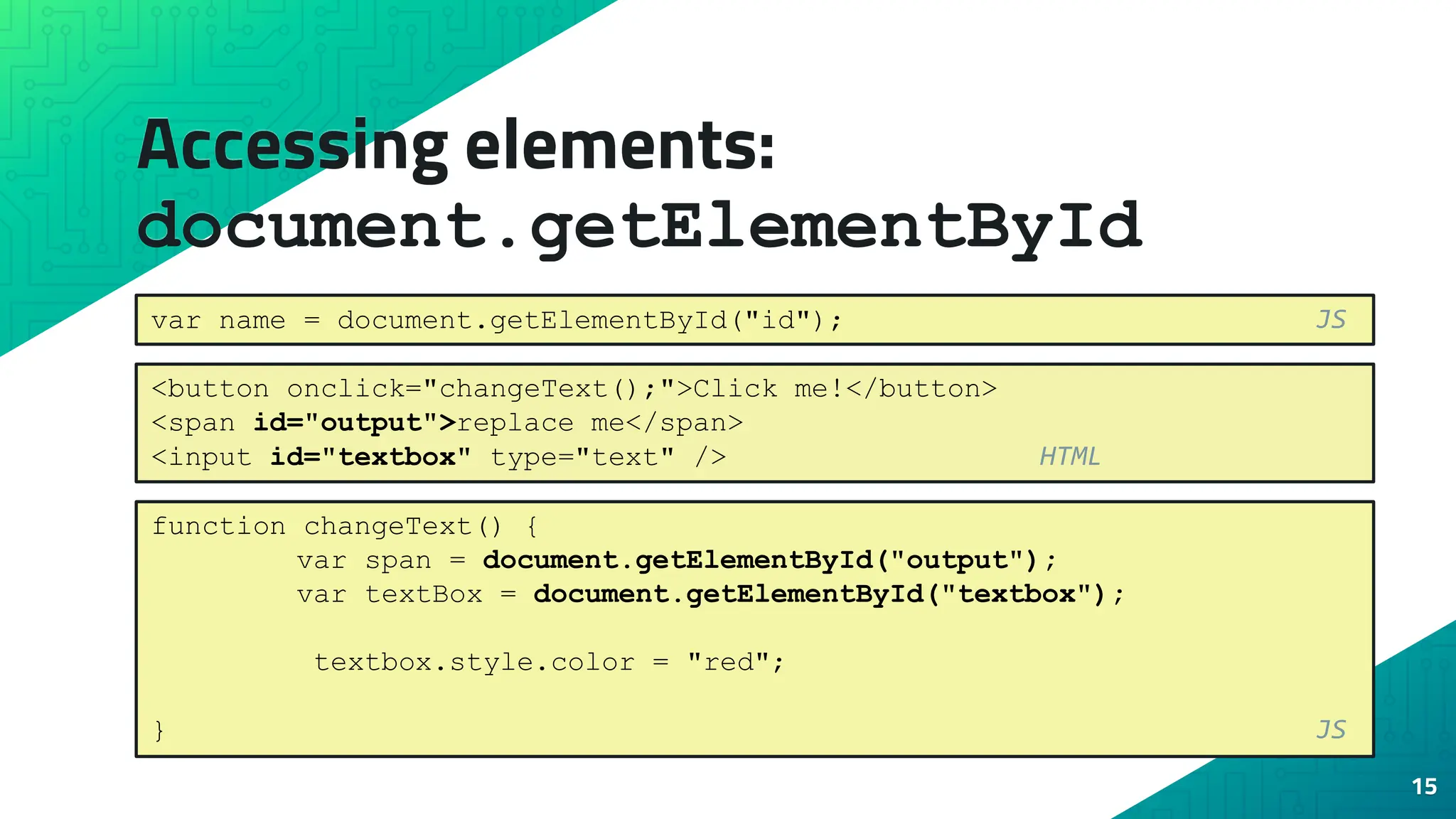
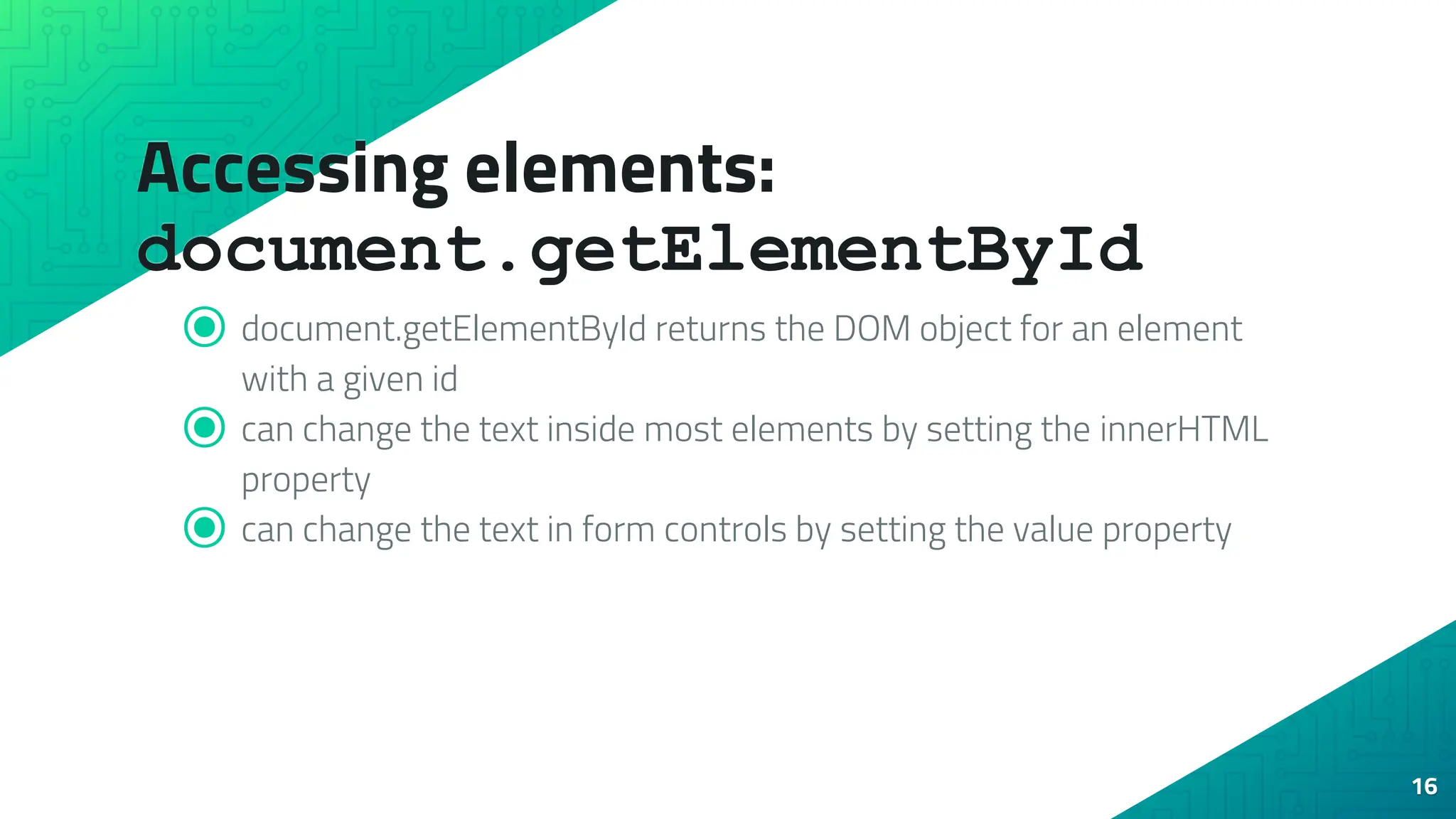
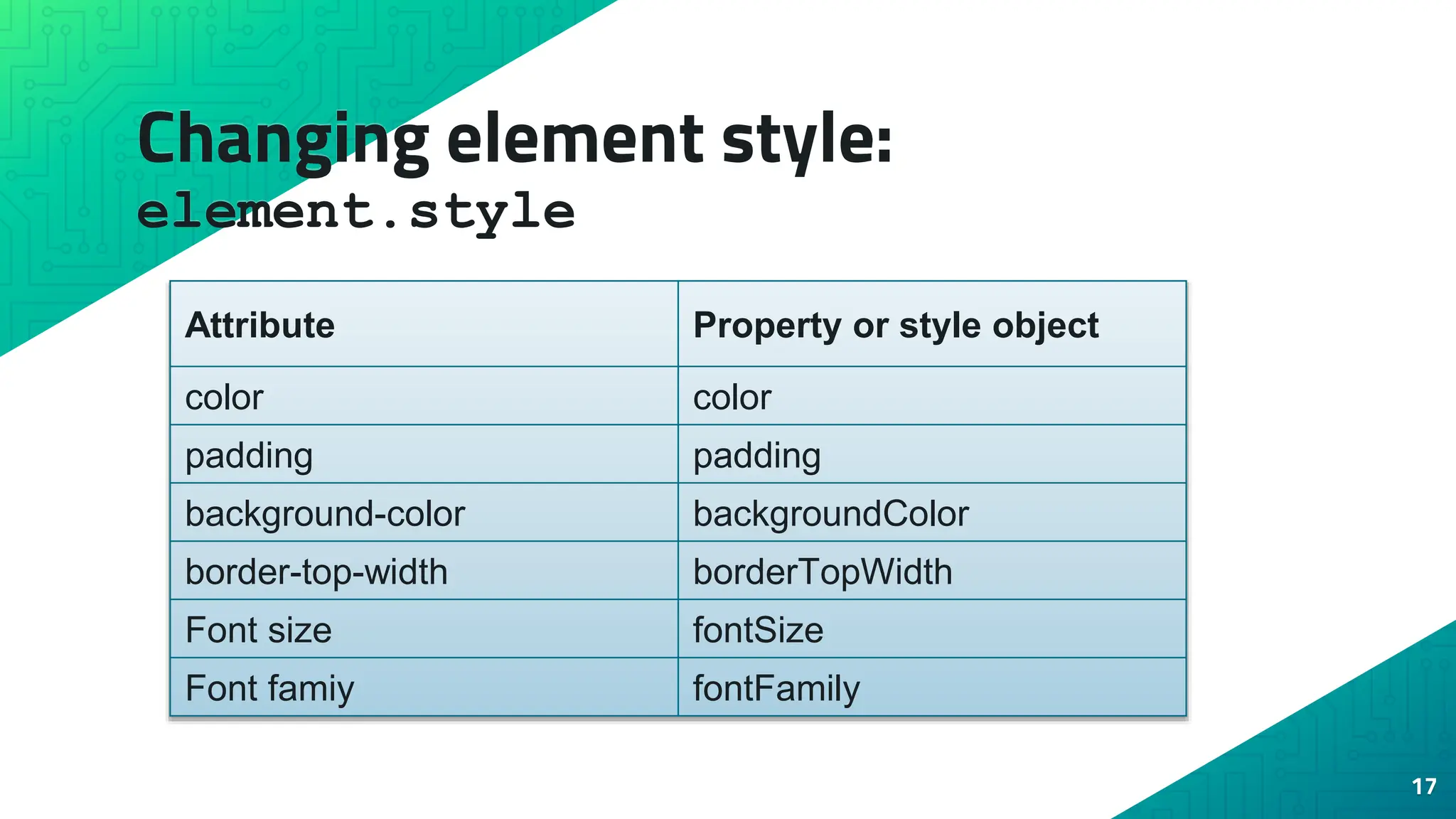
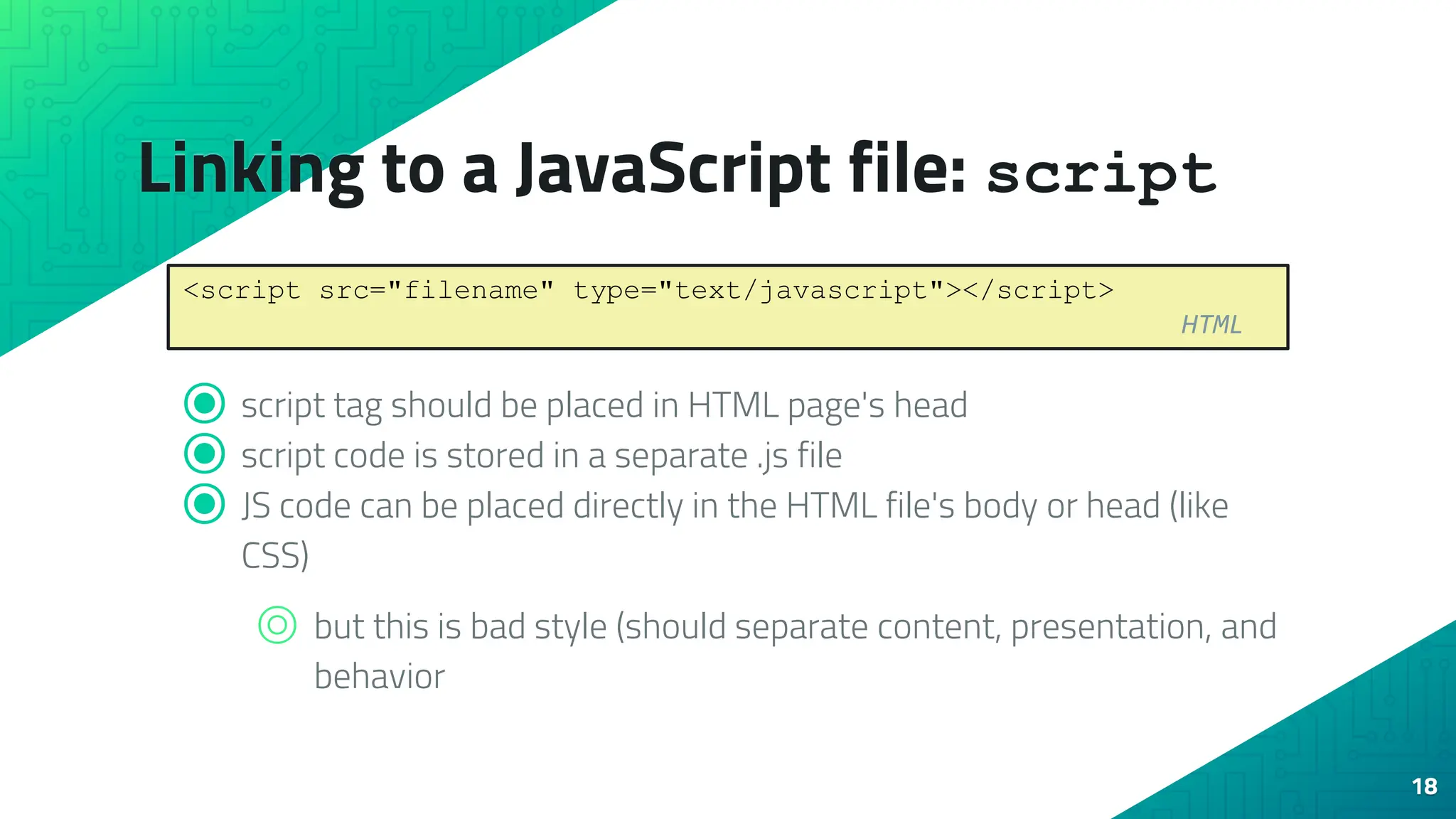
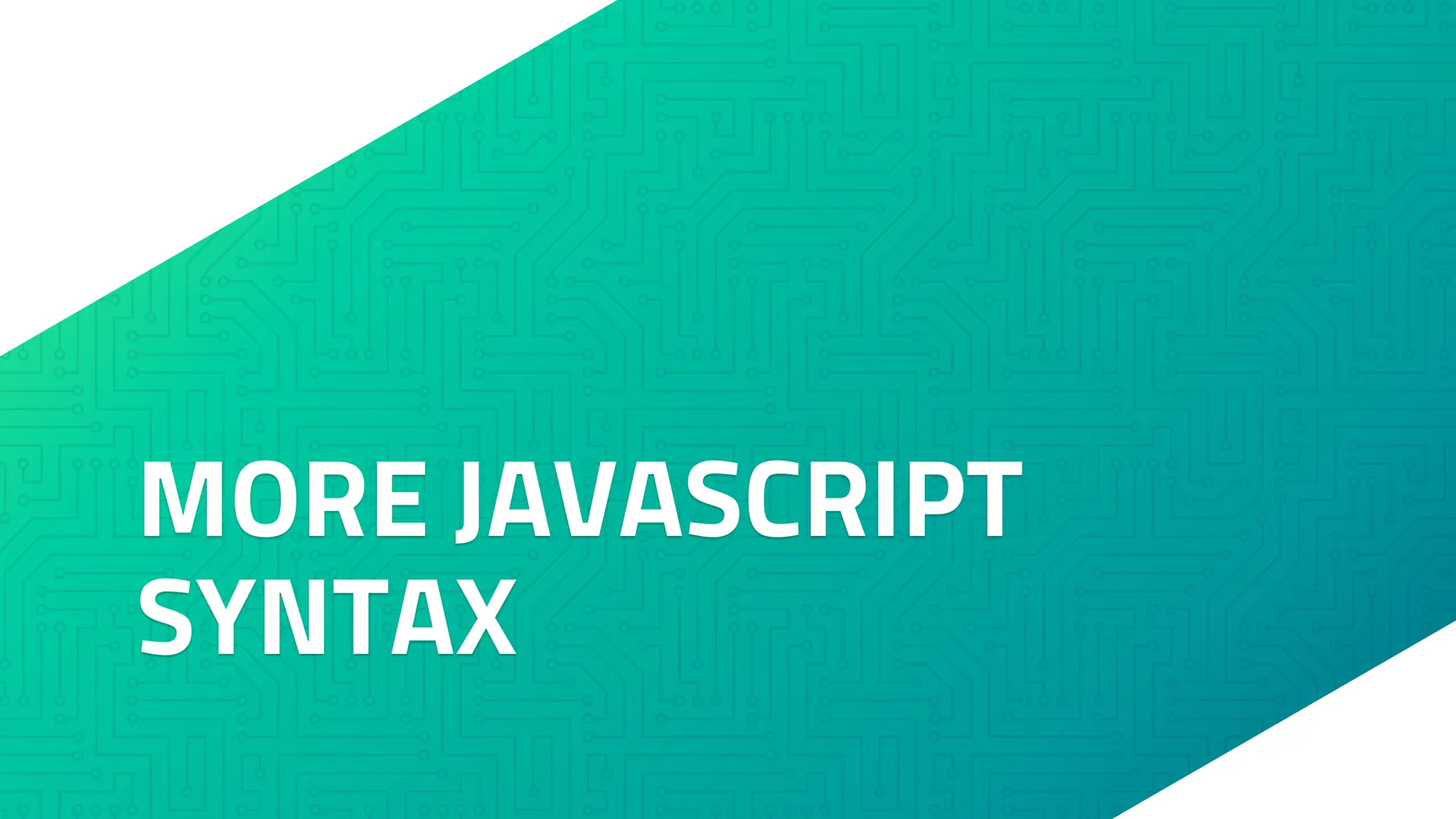
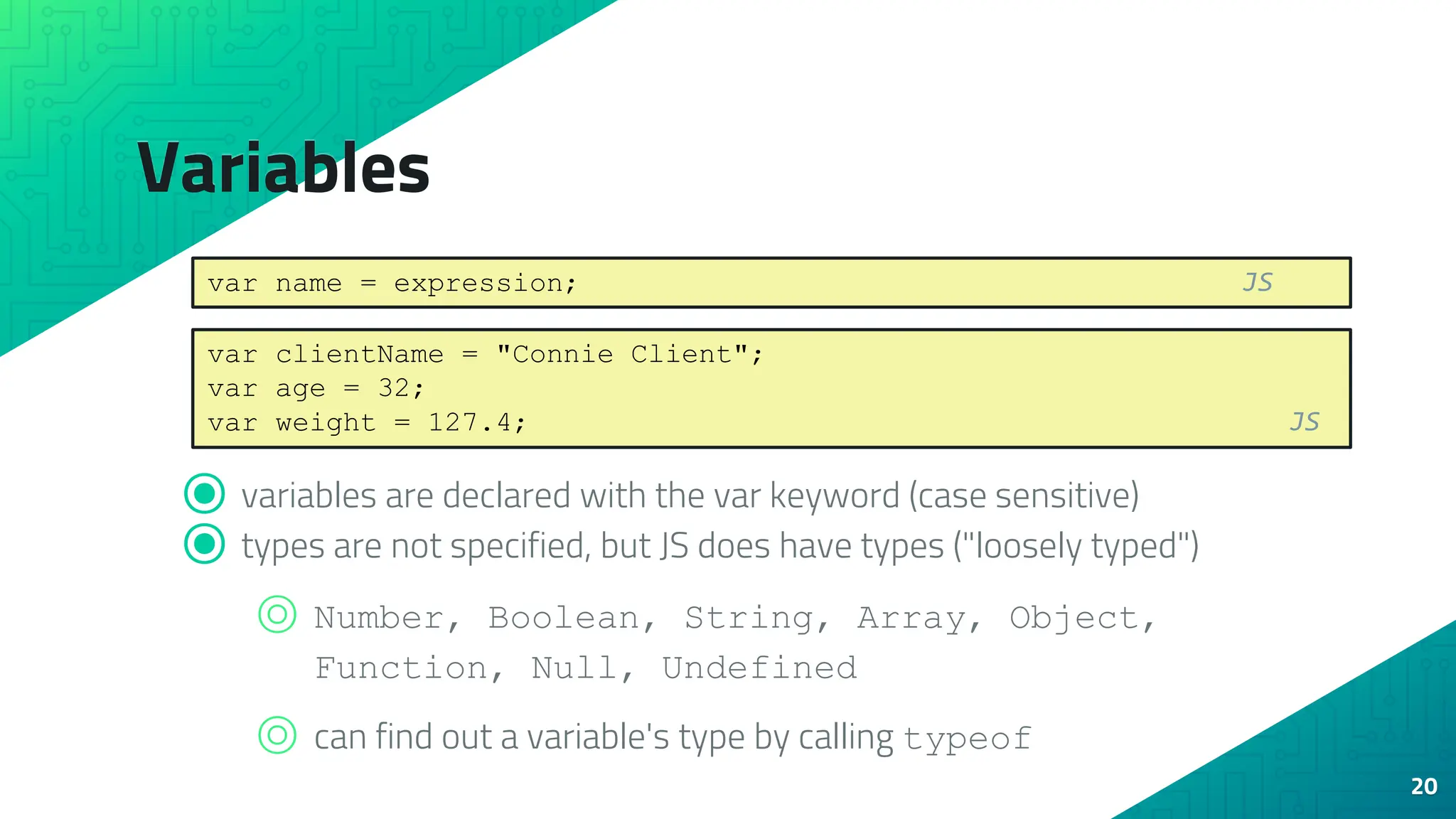
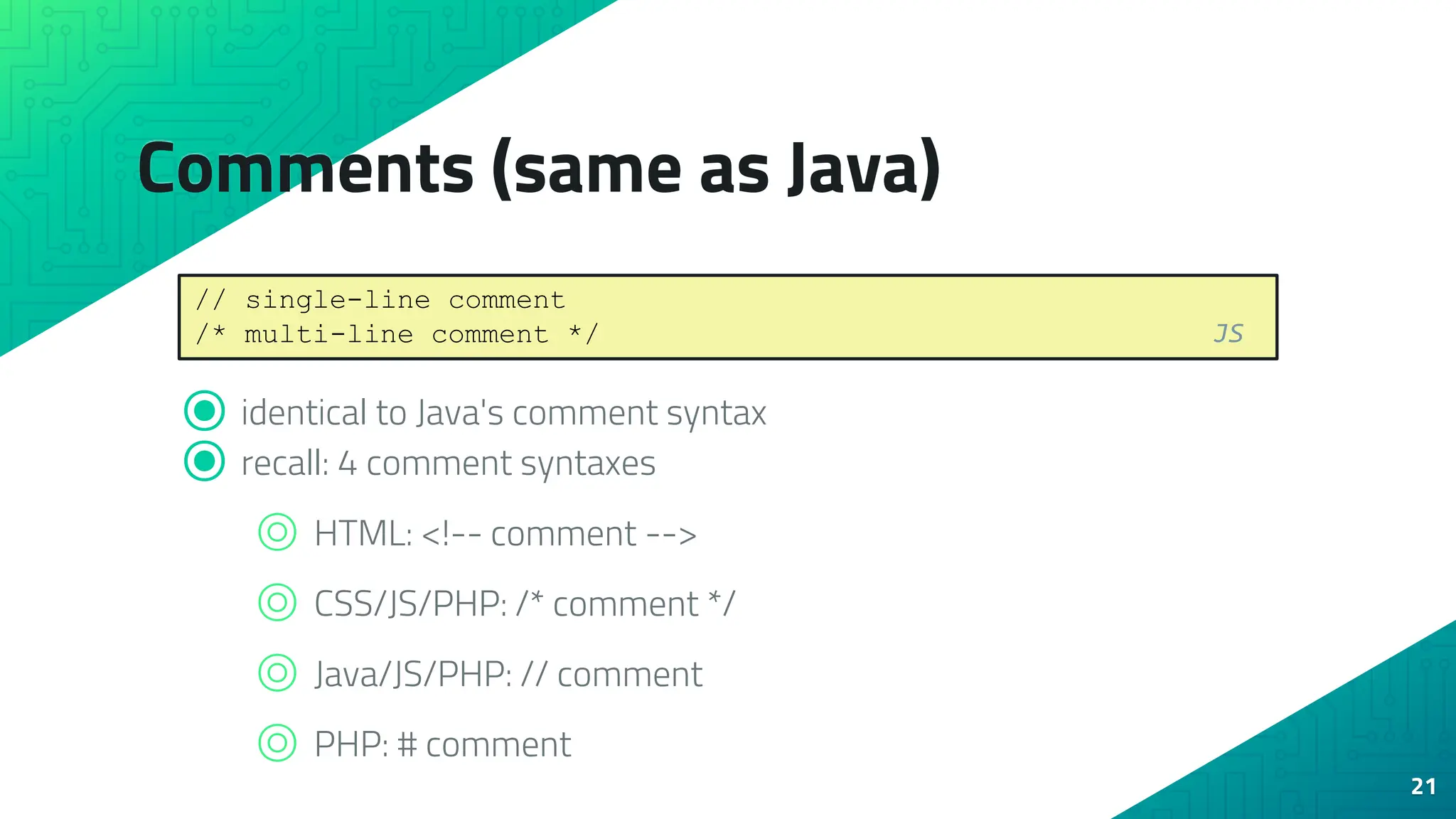
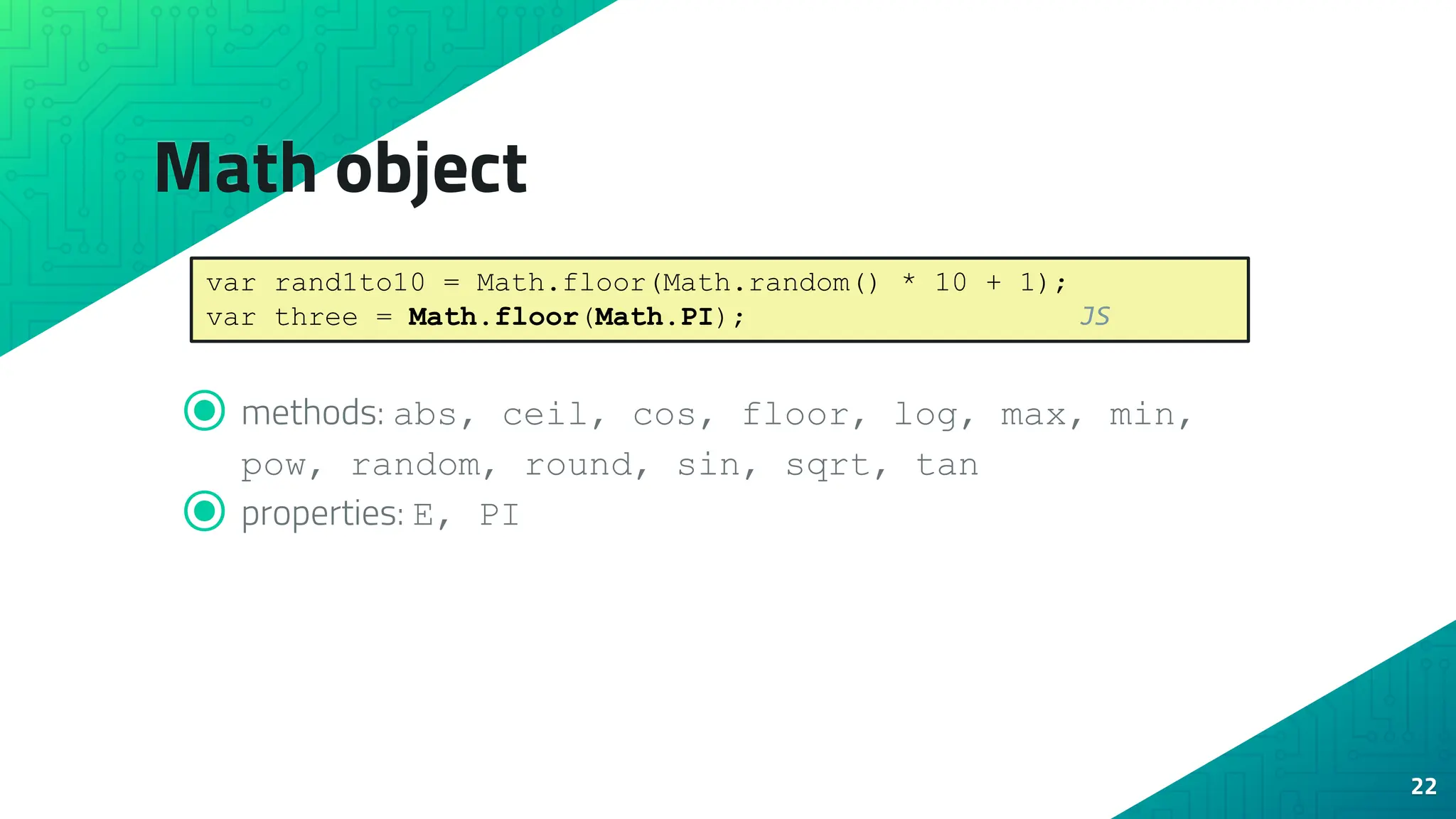
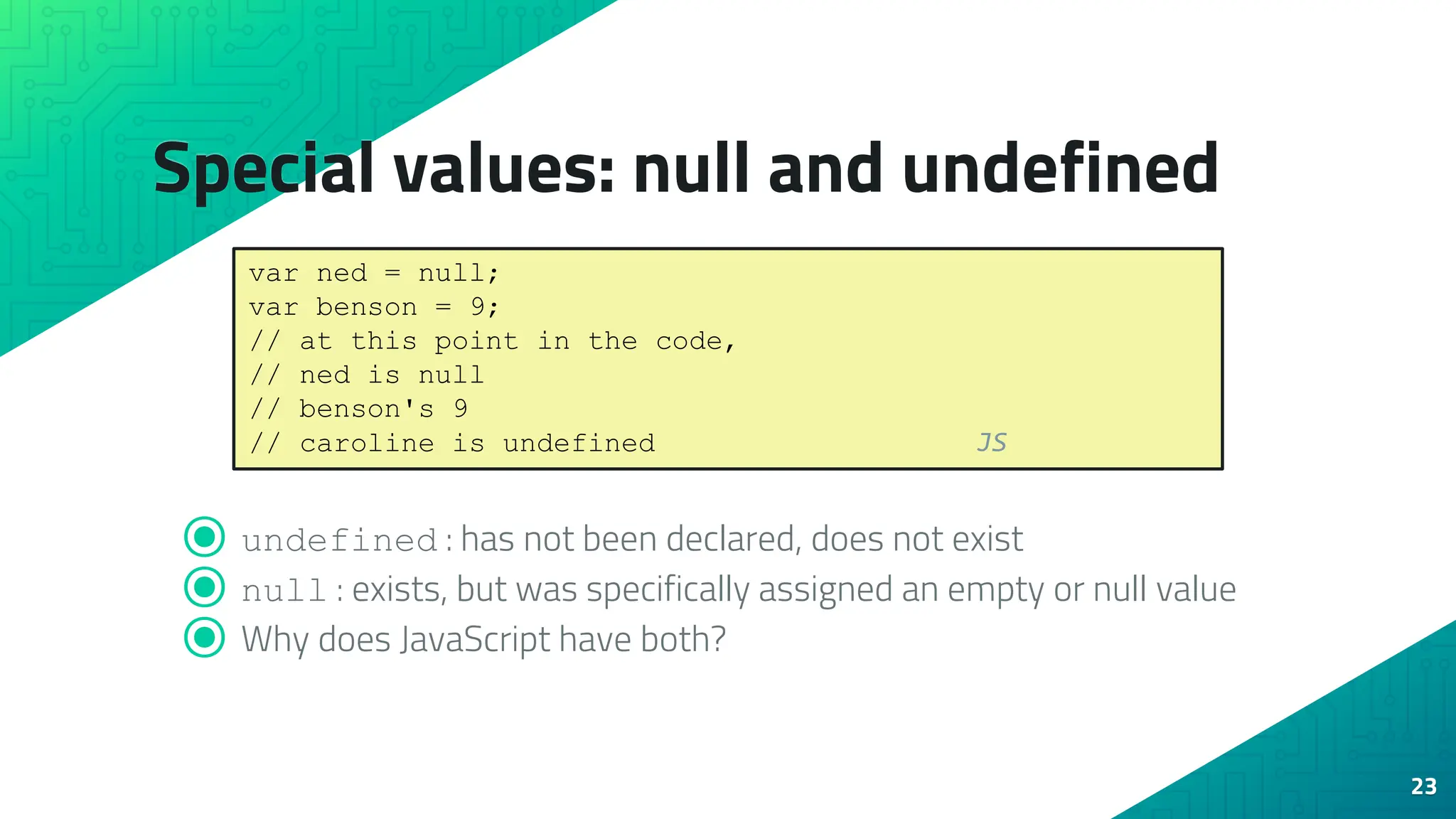
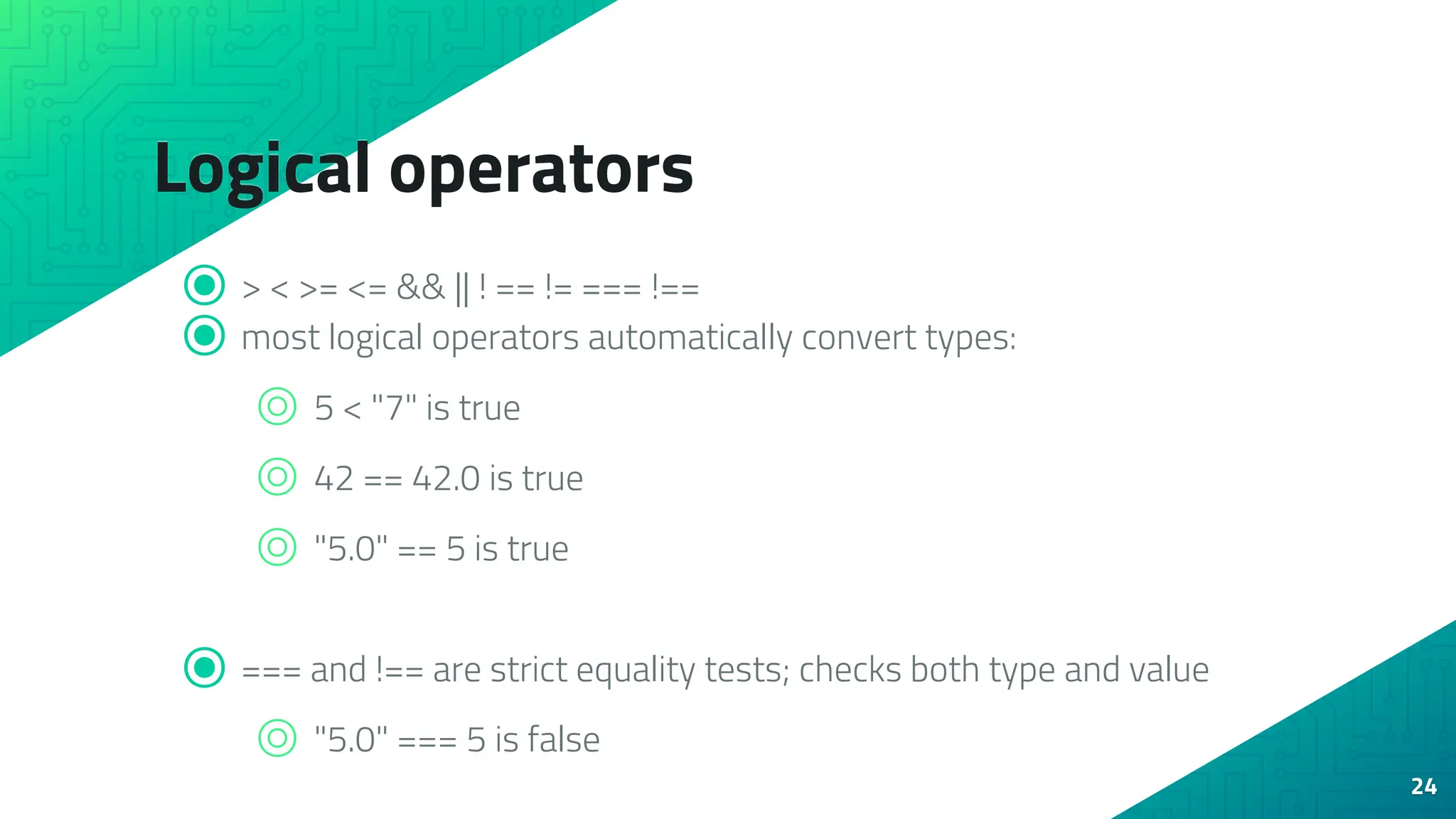
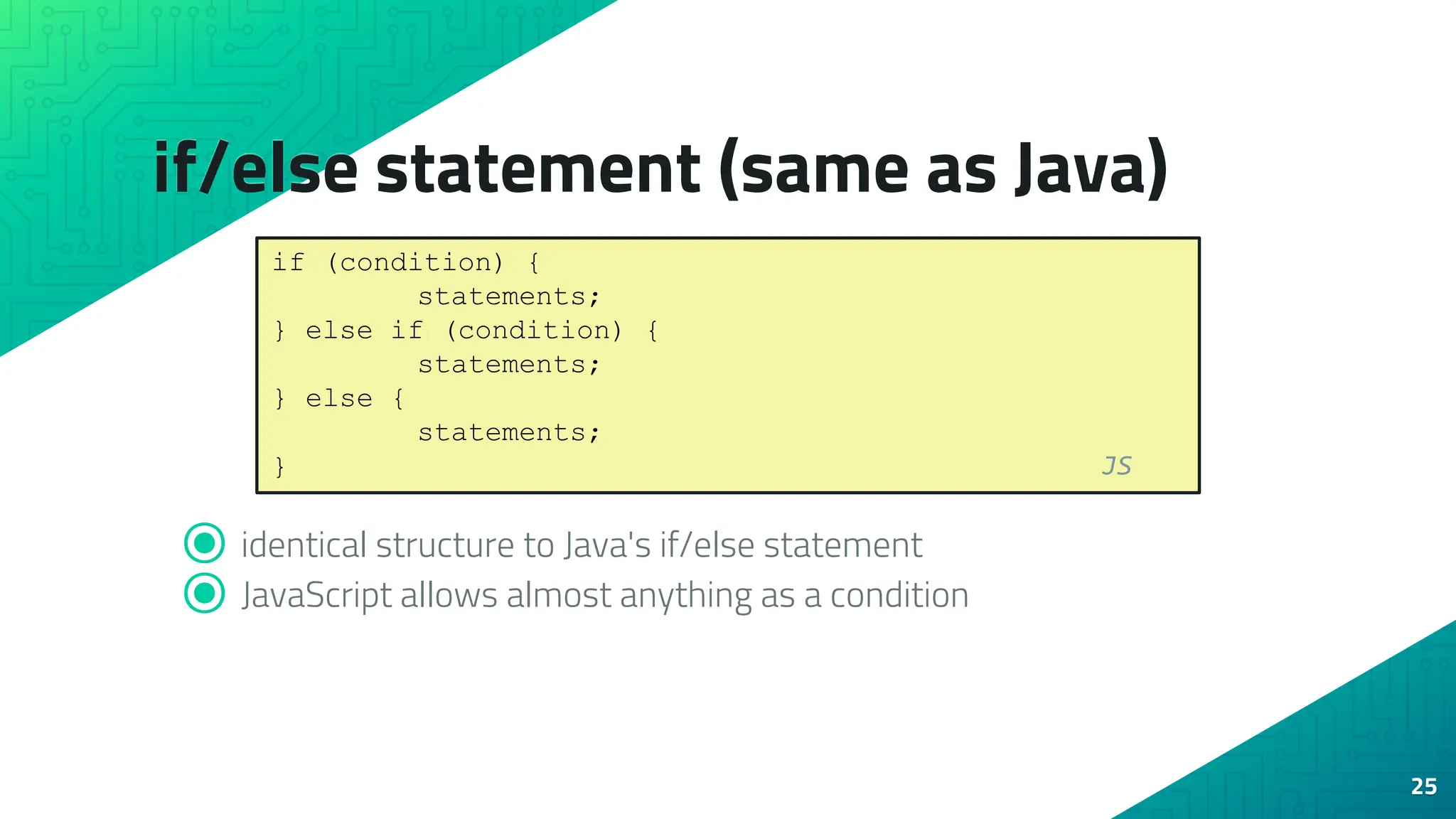
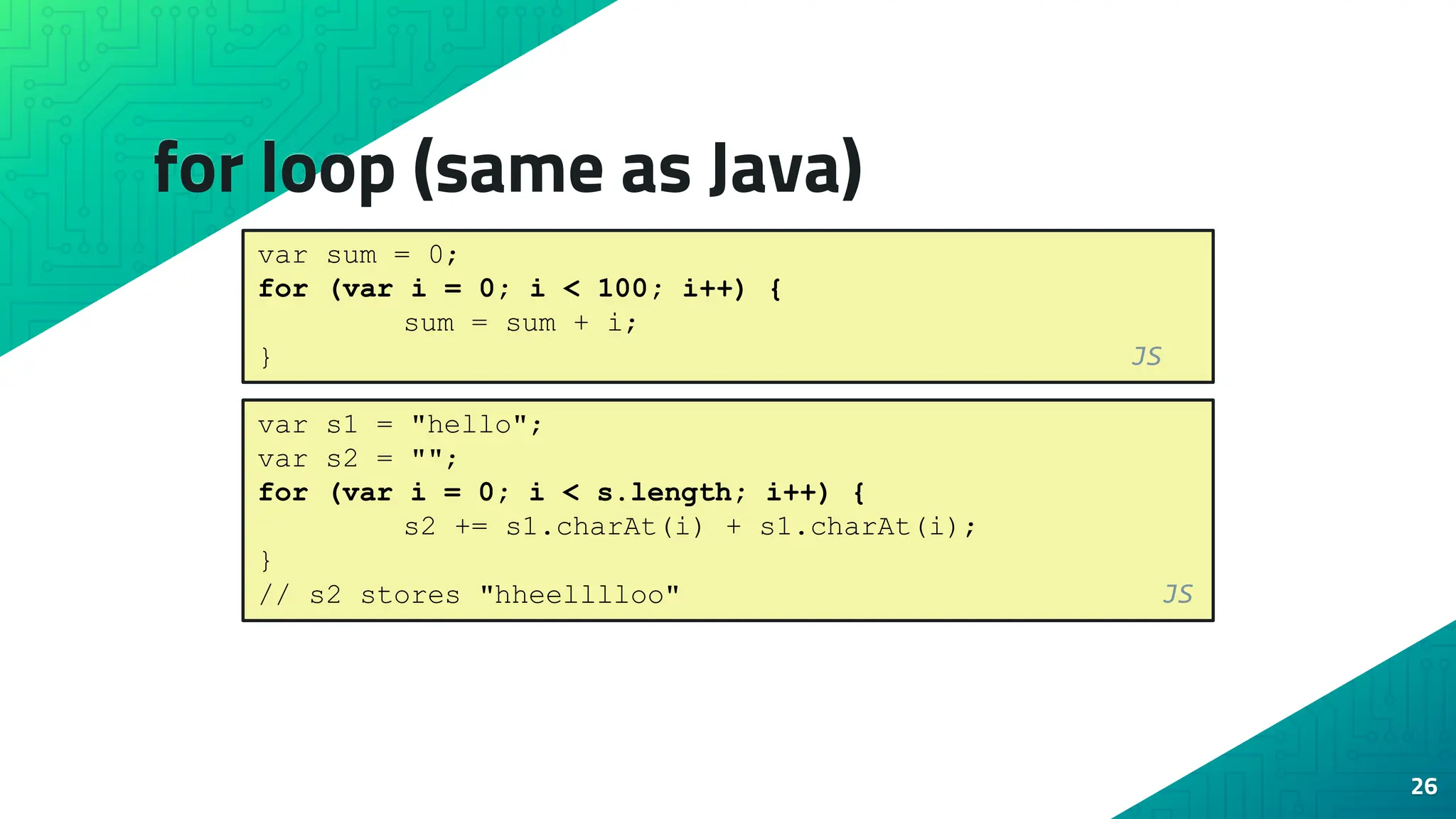
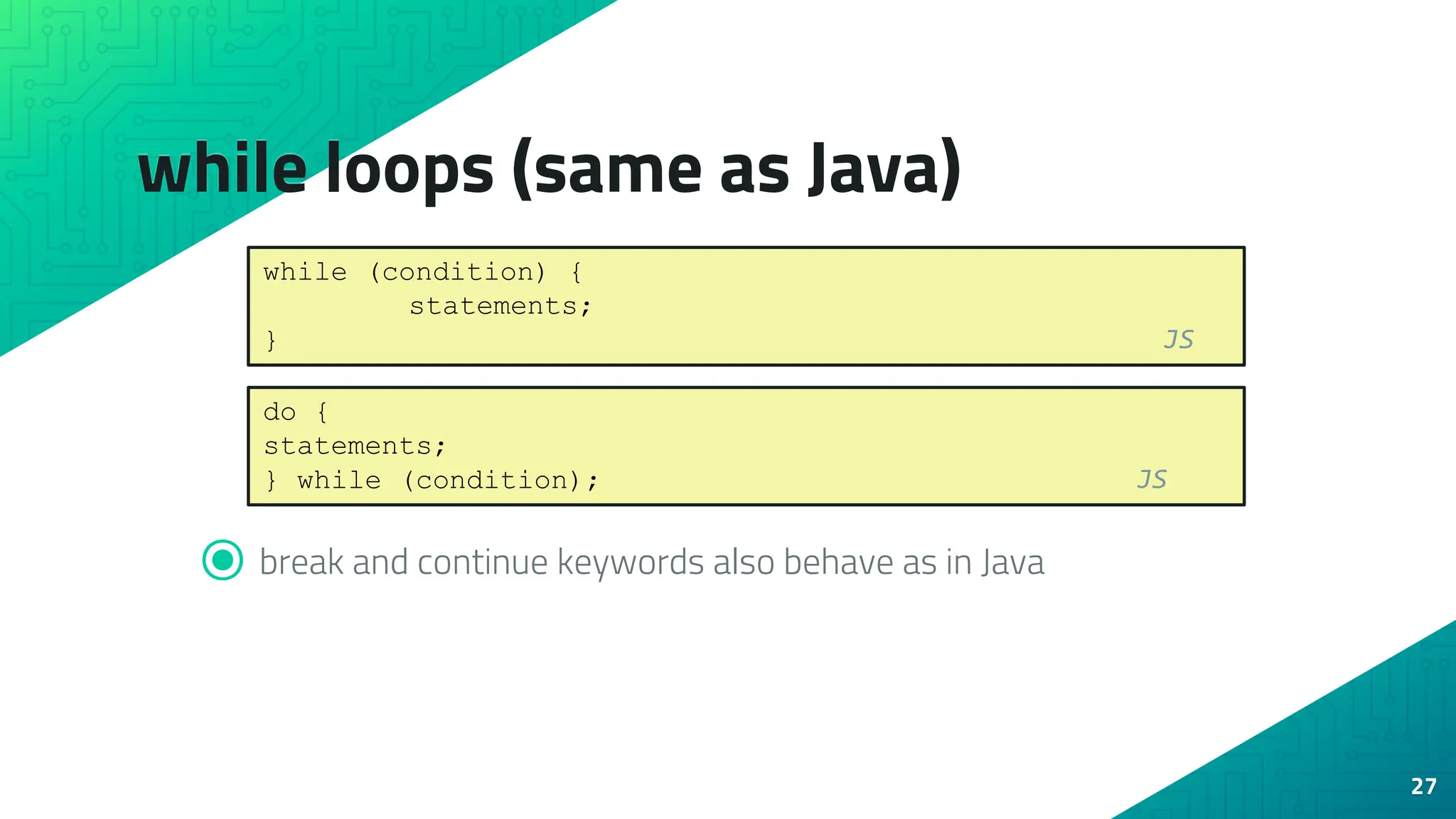
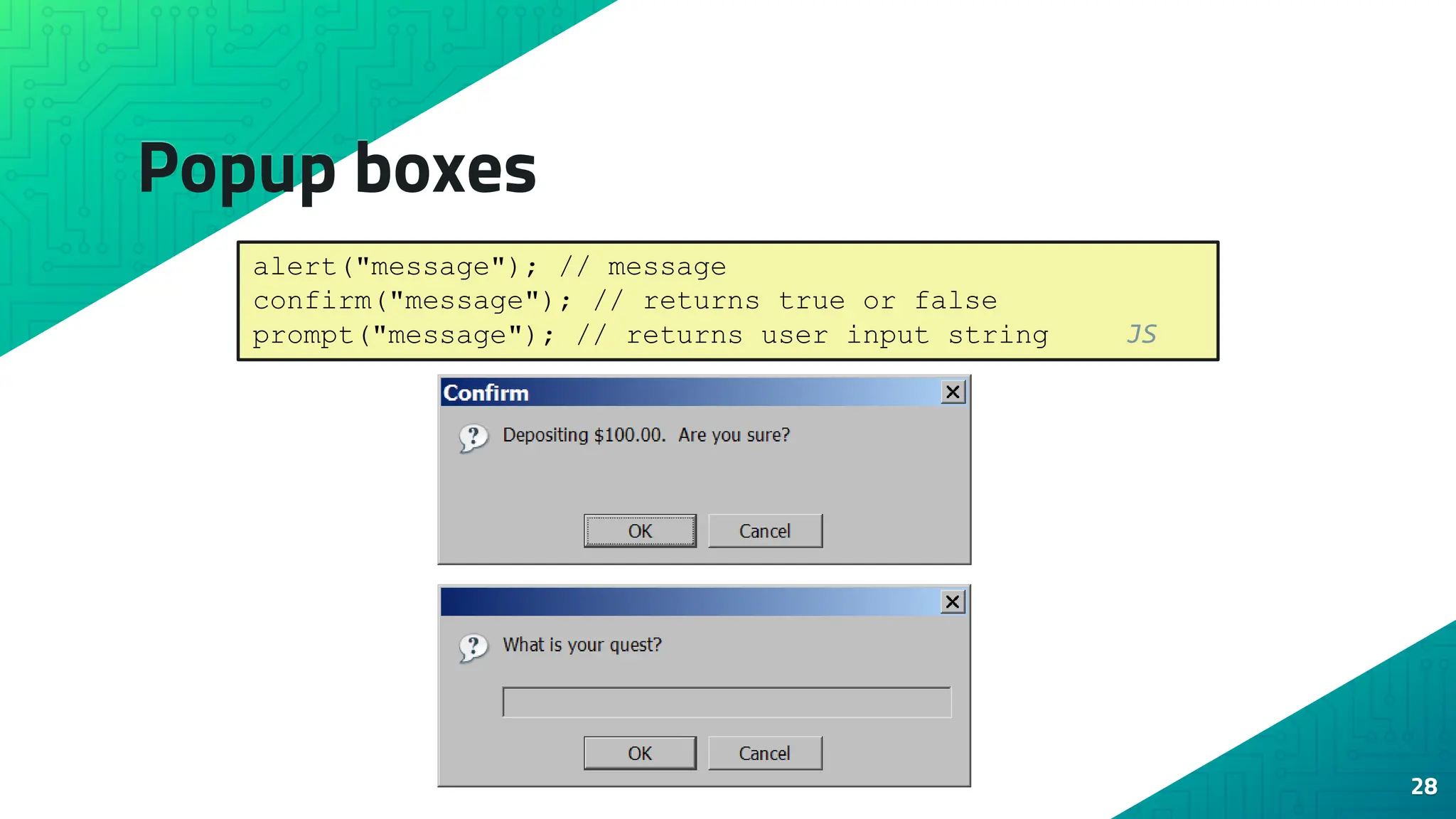
![Arrays 29 var name = []; // empty array var name = [value, value, ..., value]; // pre-filled name[index] = value; // store element JS var ducks = ["Huey", "Dewey", "Louie"]; var stooges = []; // stooges.length is 0 stooges[0] = "Larry"; // stooges.length is 1 stooges[1] = "Moe"; // stooges.length is 2 stooges[4] = "Curly"; // stooges.length is 5 stooges[4] = "Shemp"; // stooges.length is 5 JS](https://image.slidesharecdn.com/introductiontojavascript-240319233112-a36992eb/75/MYSQL-DATABASE-INTRODUCTION-TO-JAVASCRIPT-pptx-29-2048.jpg)
![Array methods 30 ⦿ array serves as many data structures: list, queue, stack, ... ⦿ methods: concat, join, pop, push, reverse, shift, slice, sort, splice, toString, unshift ⌾ push and pop add / remove from back ⌾ unshift and shift add / remove from front ⌾ shift and pop return the element that is removed var a = ["Stef", "Jason"]; // Stef, Jason a.push("Brian"); // Stef, Jason, Brian a.unshift("Kelly"); // Kelly, Stef, Jason, Brian a.pop(); // Kelly, Stef, Jason a.shift(); // Stef, Jason a.sort(); // Jason, Stef JS](https://image.slidesharecdn.com/introductiontojavascript-240319233112-a36992eb/75/MYSQL-DATABASE-INTRODUCTION-TO-JAVASCRIPT-pptx-30-2048.jpg)
